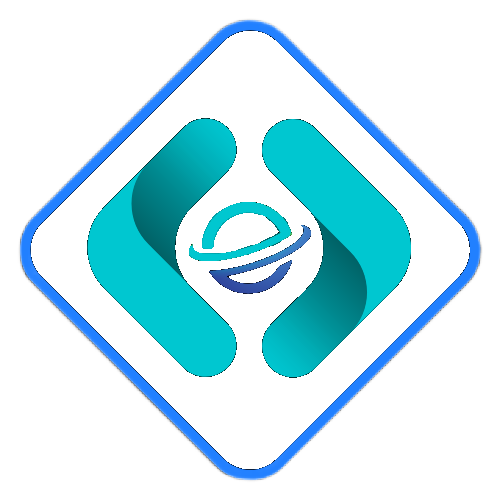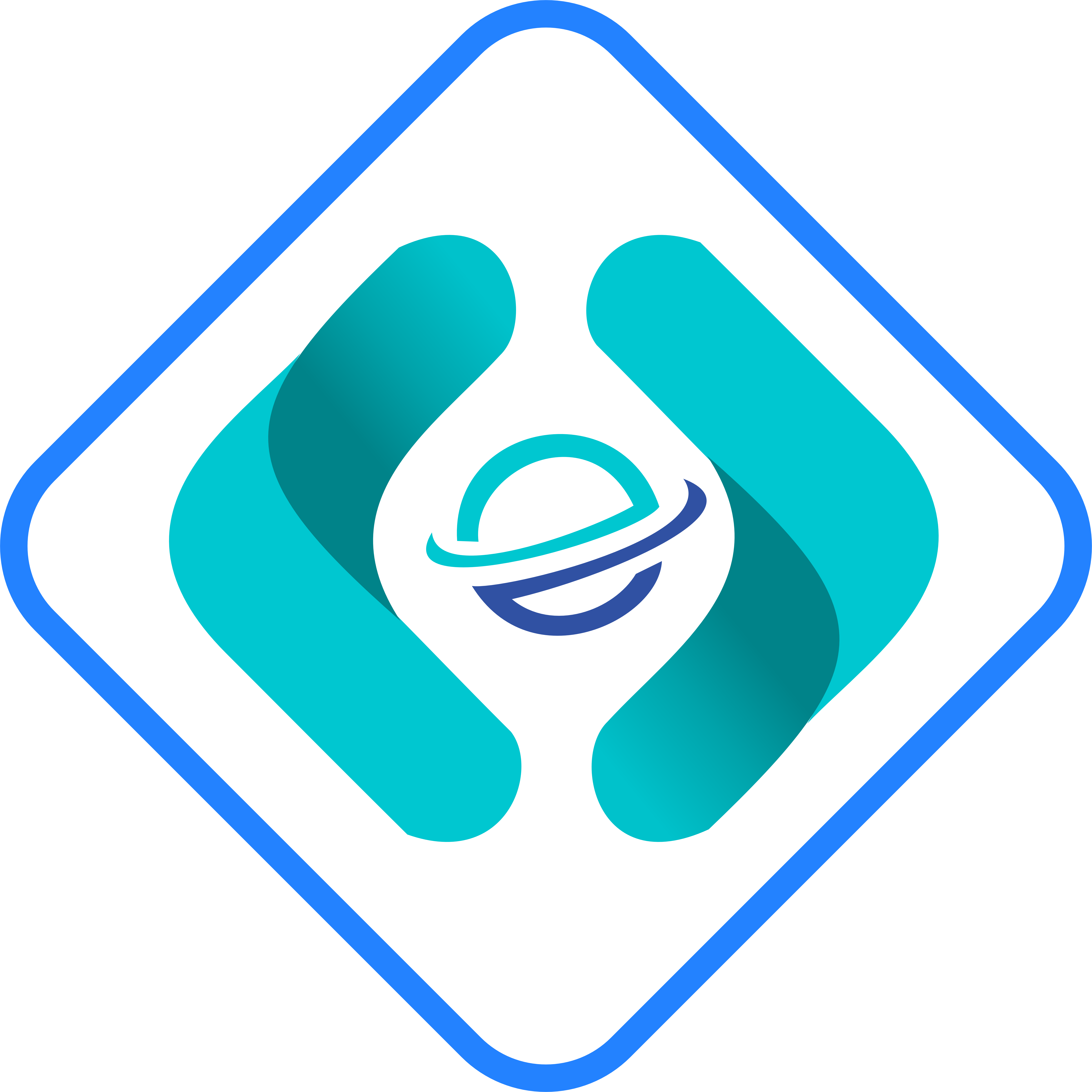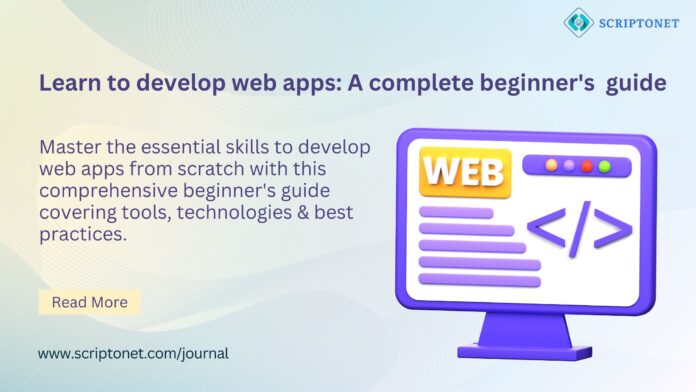Introduction
Web applications are increasingly serving as the cornerstone of modern digital experiences. From social media platforms to online banking systems, the ability to develop web apps opens doors to countless opportunities in today’s technology-driven world.
This journal covers all the fundamentals you’ll need to start building websites & web applications. Whether you’re a complete beginner or someone looking to formalize your knowledge, you’ll discover the essential skills, tools & approaches needed to develop web apps successfully.
We’ll explore the fundamental building blocks, examine different development approaches & provide practical insights that will help you make informed decisions about your learning path. By the end of this guide, you’ll have a clear roadmap for developing your first web application.
Understanding web applications
Web applications are interactive programs that operate through your browser without requiring any downloads or installations on your device. While conventional websites mainly present static content for viewing, web apps enable users to manipulate information & execute sophisticated functions.
Think of a web application like a digital Swiss Army knife. Just as this tool combines multiple functions in one device, web apps integrate various features to solve specific problems. The key difference between websites & web applications is a part of functionality. While websites primarily share information, web apps process user input & provide dynamic responses.
When you develop web apps, you’re essentially creating digital solutions that users can access from anywhere with an internet connection. This accessibility makes web applications incredibly valuable in our connected world.
Essential technologies to develop web apps
Frontend technologies
The interactive, visible portions of webpages are made by frontend developers. Every frontend project relies on three core technologies working in harmony.
HyperText Markup Language (HTML) builds the foundation by organizing content & defining page structure. Without HTML, you would have no way to tell browsers where to place text, images or interactive components.
Cascading Style Sheets (CSS) create visually appealing layouts from plain text. If HTML is the skeleton, CSS acts as the clothing & makeup that makes everything look attractive & professional.
JavaScript brings interactivity & dynamic behavior to your applications. This programming language allows users to click buttons, submit forms & see real-time updates without refreshing the entire page.
Modern frontend frameworks like React, Vue.js & Angular have revolutionized how developers approach building user interfaces. These tools help you develop web apps more efficiently by providing pre-built components & organizing code in logical ways.
Backend technologies
Web applications run on backend development, which functions as the unseen infrastructure. While users interact with polished interfaces, backend systems quietly process requests, manage data storage & enforce security protocols that keep applications running smoothly.
Several programming languages dominate backend development, each offering distinct advantages for specific use cases. Python has gained significant traction in applications requiring data analysis & machine learning capabilities. Meanwhile, PHP continues to serve as a reliable foundation for content management systems & e-commerce platforms.
Database management represents another critical component of backend architecture. Developers typically choose between two primary approaches: relational databases such as MySQL & PostgreSQL, which organize data in structured tables & NoSQL databases like MongoDB, which offer greater flexibility in data storage & retrieval.
Choosing your development approach
Traditional vs modern development
Traditional web development follows a straightforward path where you learn each technology individually before combining them. This approach helps you understand fundamental concepts & builds a solid foundation.
Modern development often involves learning frameworks & tools that abstract away some complexity. While this can speed up the development process, it sometimes creates knowledge gaps in core concepts.
The choice between traditional & modern approaches depends on your goals & timeline. Start with web development’s foundational technologies to have a true understanding of it. If you need to build applications quickly, modern frameworks might serve you better.
Full-stack vs specialized development
Full-stack developers work on both frontend & backend aspects of web applications. They may contribute to various project areas, which makes them valuable team members.Specialized developers focus on either frontend or backend development exclusively. This deep focus allows them to become experts in their chosen area & often leads to higher specialization & expertise.
When you’re starting to develop web apps, consider your interests & career goals. Do you enjoy creating visual interfaces that users interact with? Frontend specialization might suit you. Are you fascinated by data processing & server management? Backend development could be your path.
Setting up your development environment
Essential tools & software
The foundation of effective web development begins with choosing an appropriate text editor or integrated development environment. Established platforms including Visual Studio Code, Sublime Text & Atom continue to dominate the market, providing developers with the essential tools needed for writing, debugging & managing code efficiently. These tools make coding more efficient by offering debugging, auto-completion, and syntax highlighting.
Version control systems like Git help you track changes in your code & collaborate with other developers. Learning Git early in your journey will save you countless hours & prevent data loss. Web browsers with developer tools are crucial for testing & debugging your applications. Chrome DevTools & Firefox Developer Tools provide insights into how your web apps perform & help identify issues.
Local development setup
Setting up a local development environment allows you to develop web apps on your own computer before publishing them online.This procedure usually entails setting up a database system, web server, and interpreter for programming languages.
Contemporary web development relies heavily on integrated technology stacks that streamline the development process. MongoDB, Express.js, Angular, Node.js (MEAN) and MongoDB, Express.js, React, Node.js (MERN) are two contemporary full-stack JavaScript techniques that provide unified development environments. Each stack provides everything needed to develop web apps from start to finish.
Many developers use containerization tools like Docker to create consistent development environments. These tools ensure your applications work the same way across different computers & operating systems.
Learning path & best practices
Structured learning Approach
Start with HTML & CSS to understand how web pages are structured & styled. Build several (7) to ten (10) static web pages to practice these foundational skills before moving to interactive elements.
JavaScript should be your next focus area. Begin with basic programming concepts like variables, functions & loops. Gradually progress to more advanced topics like DOM manipulation & asynchronous programming.
Once you’re comfortable with core technologies, explore frameworks & libraries that interest you. Don’t try to learn everything at once: master one (1) technology before moving to the next.
Project-based learning
The most effective way to develop web apps skills is through hands-on practice. Start with simple projects like a personal portfolio website or a basic calculator application. As your abilities grow, progressively raise the intricacy of the project. Create an application for to-do lists first, then move on to a basic blog or online store. Each project should introduce new concepts & challenges.
Open-source projects give you practical experience and allow you to pick the brains of seasoned engineers. Many successful developers credit open-sour
Common challenges & solutions
Technical hurdles
Debugging code can be frustrating for beginners, but it’s an essential skill that improves with practice. Learn to read error messages carefully & use browser developer tools to identify issues.
Browser compatibility issues can make your web apps behave differently across different browsers. Testing your applications in multiple browsers & using standardized coding practices helps minimize these problems.
The more complicated your applications are, the more crucial performance optimization becomes. Learn about code splitting, image optimization & caching strategies to keep your web apps running smoothly.
Learning obstacles
Information overload is common when learning to develop web apps. Focus on mastering fundamentals before exploring advanced topics. Quality understanding trumps quantity every time.
Imposter syndrome affects many developers, especially beginners. Remember that everyone starts somewhere & even experienced developers continue learning throughout their careers.
Staying motivated during challenging periods requires setting realistic goals & celebrating small wins. Join developer communities where you can share experiences & get support from peers.
Resources & tools for continuous learning
Online learning platforms
- FreeCodeCamp offers comprehensive web development courses that cover everything from basic HTML to advanced full-stack development. The platform features an interactive curriculum that incorporates practical coding exercises & project-based learning experiences.
- MDN Web Docs serves as the definitive reference for web technologies. This resource provides detailed documentation & tutorials for HTML, CSS, JavaScript & web APIs.
- The Odin Project provides an organized instructional program for web development. Through project-centered learning approaches and the creation of real-world applications, the curriculum places a high priority on developing practical skills.
Practice platforms & communities
- Codepen allows you to experiment with frontend technologies in your browser. This platform is perfect for testing small code snippets & sharing your work with other developers.
- GitHub serves multiple purposes in your development journey. Use it for version control, discovering open-source projects & showcasing your portfolio to potential employers.
- Developer communities provide support, networking opportunities & knowledge sharing. Participating in forums, attending meetups & joining online discussions helps you grow as a developer.
Conclusion
Learning to develop web apps is a rewarding journey that opens numerous career opportunities in our digital world. The combination of creativity & technical problem-solving makes web development an engaging field for people with diverse backgrounds & interests.
Success in web development comes from consistent practice, patience with the learning process & willingness to adapt to new technologies. Start with solid fundamentals, build projects regularly & connect with other developers who share your interests.
We are aware that every skilled developer had their beginnings. Your unique perspective & experiences will contribute to the solutions you create. The web development community welcomes newcomers who are eager to learn & contribute.
Takeaways
- Master the fundamental technologies (HTML, CSS, JavaScript) before exploring advanced frameworks & tools. These core skills form the foundation for everything else you’ll learn in web development.
- Practice regularly through project-based learning rather than just consuming tutorials & documentation. Building real applications reinforces concepts & develops problem-solving skills that reading alone cannot provide.
- Make connections with the developer community by participating in local events, online forums, and open-source projects. These relationships provide learning opportunities, career advice & collaborative experiences that enhance your development journey.
- Choose a learning path that aligns with your goals & interests, whether that’s full-stack development or specialization in frontend or backend technologies. Both approaches offer valuable career opportunities in today’s job market. Having the right tools & workflow established will make your coding sessions more productive & enjoyable.
Frequently Asked Questions (FAQ)
What skills do I need to develop web apps?
You need foundational knowledge of HTML for structure, CSS for styling & JavaScript for interactivity. Additionally, understanding at least one (1) backend programming language (Python, PHP, Node.js) & database management will help you develop web apps that store & process user data effectively.
Can I develop web apps without learning backend technologies?
Yes, you can develop web apps using frontend technologies combined with Backend-as-a-Service (BaaS) platforms like Firebase or Supabase. These services handle server-side functionality, allowing you to focus on user interface & experience while still creating fully functional applications.
What distinguishes web applications from mobile applications?
Mobile applications are downloaded and installed on certain devices, but web apps operate in browsers and function on various devices without installation. You can develop web apps once & they’ll work on desktops, tablets & smartphones, making them more cost-effective for reaching diverse audiences.
Do I need a computer science degree to develop web apps?
No formal degree is required to develop web apps successfully. Many professional developers are self-taught or have completed coding bootcamps. Employers typically value practical skills, portfolio projects & problem-solving abilities over formal education credentials in web development roles.


